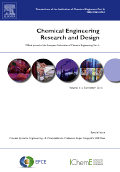 Authors: Ricardo MORALES-RODRIGUEZ¹, Rafiqul GANI¹, Stéphane DECHELOTTE², Alain VACHER², Olivier BAUDOIN²
Authors: Ricardo MORALES-RODRIGUEZ¹, Rafiqul GANI¹, Stéphane DECHELOTTE², Alain VACHER², Olivier BAUDOIN²
Reference: Chemical Engineering Research and Design, vol. 86 (2008), no. 7, pp. 823-833.
Affiliations: ¹CAPEC, Department of Chemical and Biochemical Engineering, Technical University of Denmark, DK-2800 Lyngby, Denmark and ²ProSim S.A., Stratège Bâtiment A, BP 27210, F-31672 LABEGE Cedex, France
Abstract:
Computer-aided design, analysis and/or operation of chemical products and processes that manufacture them require a number of computational tools. As these tools may come from different sources and disciplines, an important issue is how they can be used simultaneously and efficiently for the design, analysis and/or simulation of a specific process-product? One alternative is to employ CAPE-OPEN standard interfaces for integration of the set of diverse computational tools that may be needed to solve the problem. The objective of this paper is to highlight, through examples, the integration of different computational tools according to problem specific work-flows/data-flows. The reliability of the integration of different tools is illustrated through two case studies. In case study 1, the tools Simulis® Thermodynamics (PME) and ICAS-MoT (PMC) are combined for the calculation of thermodynamic properties through the use of a standard middleware (DLL file). In case study 2, the interoperability between ProSimPlus simulator (PME) and ICAS-MoT (PMC) is highlighted for simulation of a new unit operation and combined with other unit operations that can be found in the host simulator. A ProSimPlus-ICAS-MoT–COFE interoperability is also carried out successfully to proof the interoperability of the different computational entities. Furthermore, the introduction of the multiscale modelling concept and its application through the CAPE-OPEN standards is highlighted.
DOI:10.1016/j.cherd.2008.02.022
CAPE-OPEN related references cited in text:
- Barrett, W.M., Jr. and Yang, J., 2005, Development of a chemical process modelling environment based on CAPE-OPEN interfaces standards and the Microsoft NET framework. Comp Chem Eng, 30: 191–201.
- Belaud, J.P. and Pons, M., 2002, Open software for process simulation: the current status of CAPE-OPEN standard, Computer-Aided Chemical Engineering, in European Symposium on Computer Aided Process Engineering-12, vol. 10, Grievink, J. and van Schijndel, J., van Schijndel, J. (eds.) (Elsevier, Amsterdam, Netherlands)
- Braunschweig, B.L., Pantelides, C.C., Britt, H.I. and Sama, S., 2000, Process modelling: The promise of open software architectures. Chem Eng Prog, 96 (September issue), pp. 65–76.
- Morales-Rodriguez, R., Sales-Cruz, M., Gani, R., Dechelotte, S., Vacher, A. and Baudouin, O., 2006, Interoperability between modelling tools (MoT) and process simulators (ProSim) through CAPE-OPEN standards, Paper 489c, In Presented at AIChE Annual Meeting, San Francisco, USA.
- Pons, M., 2003, Industrial implementations of the CAPE-OPEN standard, In AIDIC Conference Series, vol. 6 , pp. 253–262.
